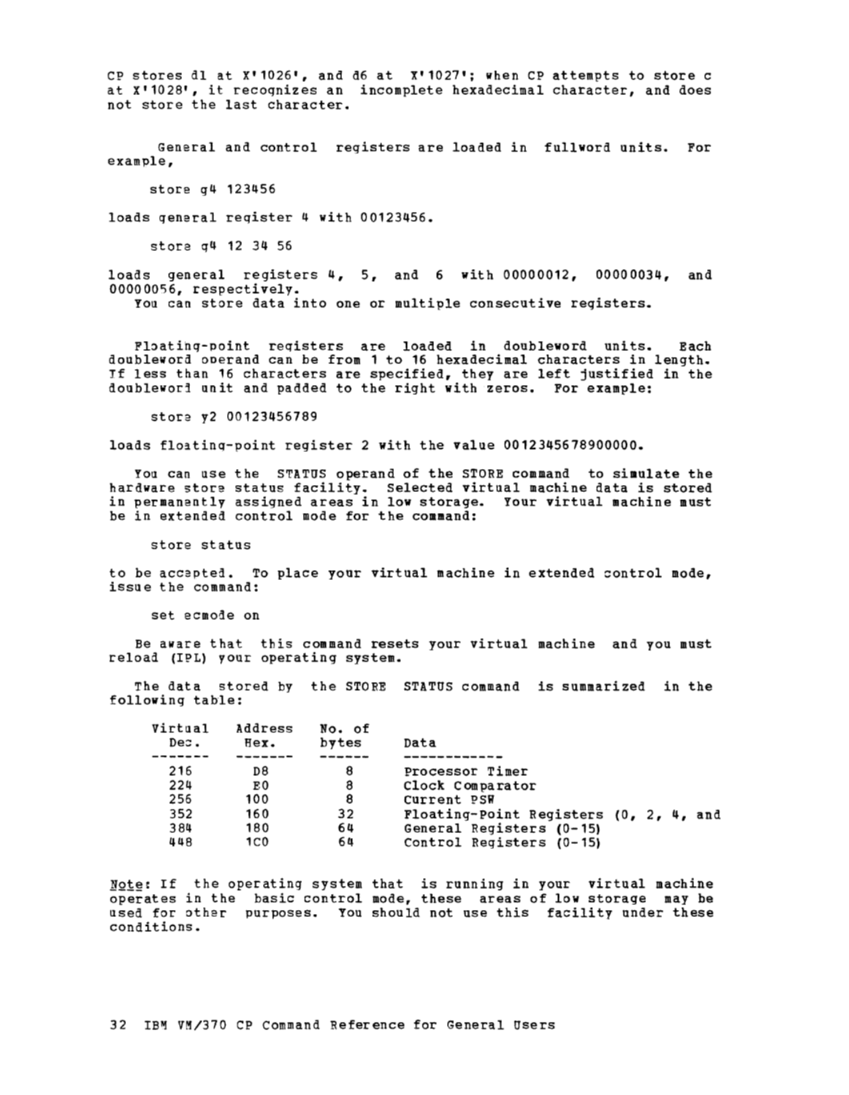header information to identify the owner of the dump; it also maintains
dump information, writes the dump to a spool file, and formats the dump.When you enter at the terminal vmdump i50-200 -- or --
vmdump400:500 rp 1umps the contents of virtual machine storaqe at the hexadecimal
addressesbetween 150 and 200 or between 400 and 500, respectively.
Ifvou enter
vmdump150.50 CP dumps the contents of virtual storage starting at hexadecimal address 150 for a total of X'50' bytes.
ALTERINGVIRTUAL STORAGE You can
registers, floating-point reqisters, control registers (if available),
and thePSW with the STORE command. Virtual storaqe can be altered in either fullword or byte units. When usinq fullword units, the address of the first positions to be
stored must have either an L or no prefix:store 1024 46a2 or store 11024 46a2
results in000046A2 beinq stored in locations 1024 1024 46 a2
on the other hand, implies storing 2 fullwords and results in the
storinq of00000046000000A2 in locations 1024 throuqh 102B. If the starting location is not a multiple of a fullword, it is
length. If less than 8 characters are specified, they are right
;ustified in the fullword unit and padded to the left with zeros.You can store in byte units by prefixing the start address with an S. store s1026 d1d6c5
stores D1D6C5 in locations1026, 1027, and 1028. Note that the data storage is byte aligned. If an odd number of hexadecimal characters is
soecified,co. does not store the last character, you receive an error
message,CP terminates the function. For example, if you specify:
stores1026 dld6c
Section 3.CP Command Usage 31
dump information, writes the dump to a spool file, and formats the dump.
vmdump
addresses
If
vmdump
ALTERING
registers, floating-point reqisters, control registers (if available),
and the
stored must have either an L or no prefix:
results in
on the other hand, implies storing 2 fullwords and results in the
storinq of
length. If less than 8 characters are specified, they are right
;ustified in the fullword unit and padded to the left with zeros.
stores D1D6C5 in locations
soecified,
message,
store
Section 3.






















































































































































































































